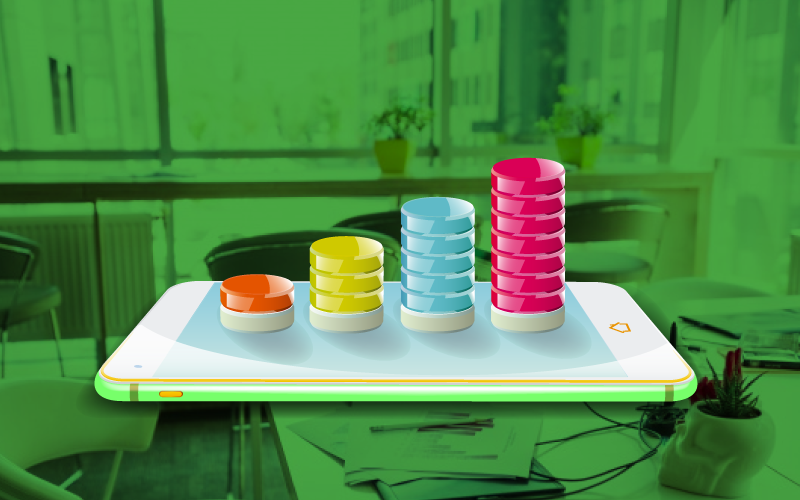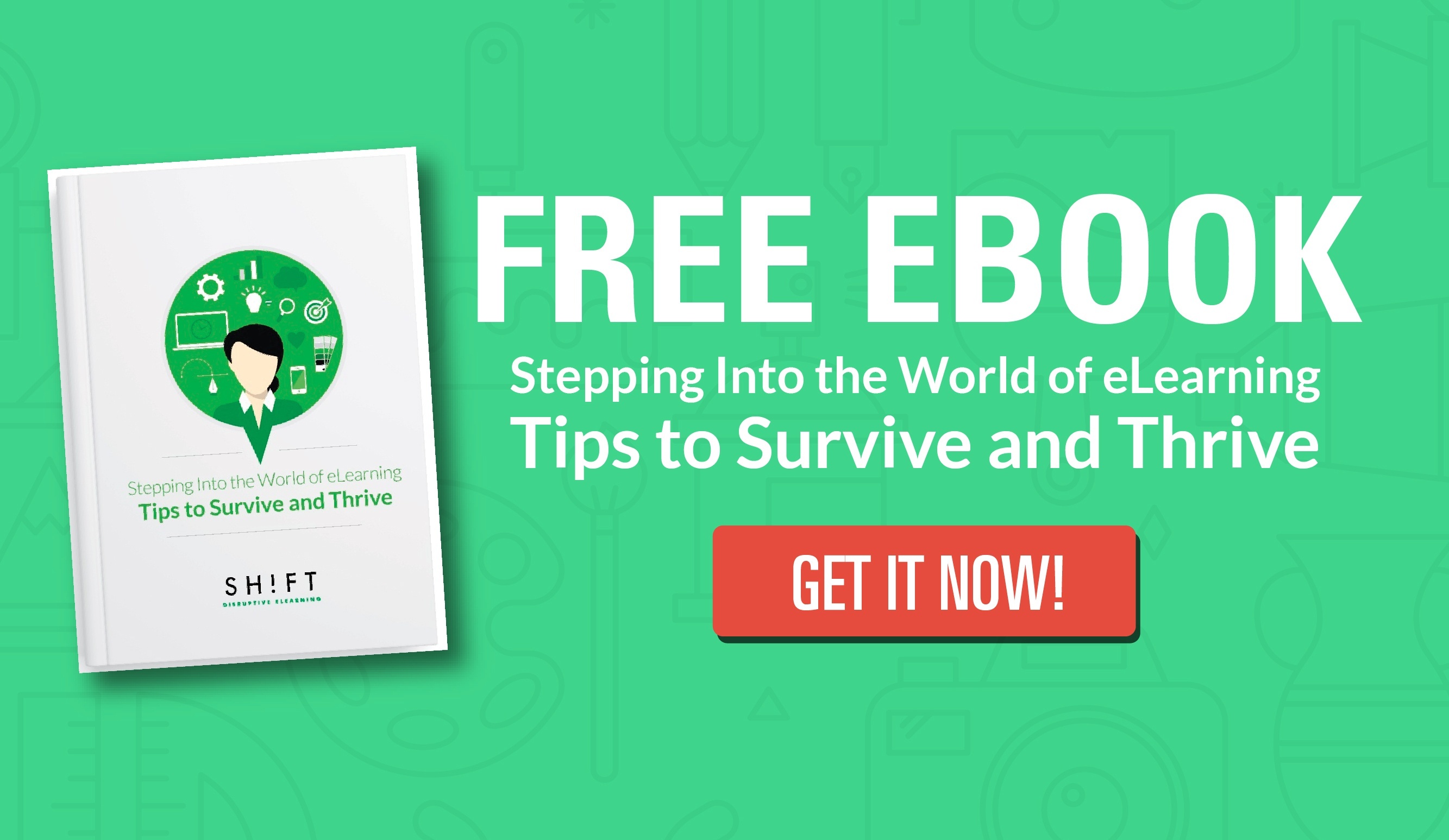The education and corporate training landscape is evolving faster than ever. Workers are distracted, impatient and overloaded with information. Their expectations, training needs, and learning preferences are diverging from the well-beaten paths we've mapped out in the past. People are busy, they multi-task, and work from anywhere, including their mobile devices.
As learning & development professionals, we must always be looking out for ways to help our employees keep learning in this fast-paced work environment. Let's provide them with the bite-sized modules of training they need to achieve their goals. Let's make the shift from long courses to bite-sized resources to better suit the new fast-paced work environment.
For many eLearning professionals, bite-sized has always been the right size. Imagine it, more useful content that fits smaller screens or just about any screen. Learners can work on any platform, switch back from their mobile device to the desktop, anytime. Snackable content also makes it easier for them to savor every lesson step after step—something that's not possible with lengthy materials.
Offer your audience light, short yet substantial content. They'll surely come back for more.
There are many good reasons learners prefer bite-sized eLearning modules to eLearning courses that run to 30 minutes and more. You might want to take a look at some of these:

1) Bite-sized learning improves psychological engagement
It's no secret that eLearning professionals are all fighting against boredom. Once learners exhibit signs of boredom, getting their attention back will be too difficult, if not futile.
This is where bite-sized learning comes in. It offers a promising antidote to boredom by primarily increasing a learner's psychological engagement. It takes away boredom itself. Instead of spending 60 or more minutes on a single course, learners will be motivated to consume short, snappy yet meaningful content.
This approach can help prevent mental burnout too. Moreover, it encourages students to carefully process information—not hastily and thoughtlessly consume an overwhelming amount of data.
Read more: 6 Ways to Never Create Boring eLearning Courses Again
2) Bite-sized modules take full advantage of our natural energy ebb and flow
It's impossible for learners—and, of course, us humans—to focus on a task for an extended period of time without pause. That's because of the ebb and flow of our energy.
Normally, after 60 to 90 minutes, our alertness decreases. During this time, we're likely going to move away from the desk or stare out of the window or think about something else—we're likely going to pause.
Learners operate on a recurrent pattern of activity and rest. That's why giving them bite-sized eLearning modules while they are at the peak of their energy levels often leads to successful results. This content format speaks directly to their apparently ever-shrinking attention span. Their sharp bursts of energy are a good match for just the right amount of information. They can easily scan a page with bullet points of quick, meaningful information.
Abreena Tompkins, instruction specialist, explains this more clearly: “Physiologically, your neurons are keen and alert for no more than 20 consecutive minutes. At the end of those 20 minutes, your neurons have gone from full-fledged alert to total collapse, and it takes two to three minutes for those neurons to be completely recovered and back to the total alert state. If you break longer than three minutes, you’ve redirected your attention”.
Read more: The Science of Attention (And Why eLearning Professionals Should Care)
3) Bite-sized chunks of content hack the limits of our working memory
Bite-sized content is easier to digest, understand and remember. There's no question about this. In fact, according to George Miller's Information Process Theory, a learner's attention span and short-term memory is limited to processing information in chunks. That's why adherents of such theory suggest splitting up content into small, manageable sections, rather than simply dump never-ending chains of text. This technique makes learning more manageable and easier to integrate into long-term memory. Once it’s in long-term memory learners can remember it and transfer the knowledge to their daily tasks.
For better and more cohesive structure, experts suggest grouping similar content so that students can immediately see relevant points and not get distract by irrelevant information. Chunking according to category, relevance or any other variable makes it easier for students to process and remember information. It allows them to better associate, recall and focus on a certain group of information.
Effective chunking, after all, is about making sense of information. Don’t do it just for the sake of breaking content into pieces. Do it to make information more meaningful.
Read more: Designing eLearning to Maximize the Working Memory
4) Bite-sized learning can lead to better learning results and business outcomes
It's not just about learning per se. For many companies, bite-sized learning is also about getting maximum benefits through minimal input. It's about developing short yet relevant chunks of information based on the needs of learners and of the business model.
This approach puts the Pareto (or 80/20) Principle to good use. It's the vital 20% that's responsible for 80% of your positive eLearning outcomes. Thus, costs are reduced and the return on investment increases.
5) Bite-sized learning adapts to modern learners
Today's learners are swimming in the vast sea of information. They're inundated with data coming from various devices, with messages on different chat apps, with a stream of social statuses.
So it's not surprising that many people find traditional eLearning courses overwhelming and ineffective. There's too much data being dumped, in addition to long lectures they're compelled to attend. This approach obviously makes it hard for modern learners to retain information. It really doesn’t matter how meaningful and interesting the material, learner's skimming your content is just part of the game.
Bite-sized learning, unlike the traditional approach, focuses on meeting the needs of modern learners. It perfectly suits their information-rich lifestyle. It enables them to access small chunks of information at their fingertips, anytime and anywhere. No more lengthy lectures. And no more rigid schedules. People can now learn on their spare time and learn only what they're interested in.
Read more: What Do Modern Learners Actually Want From Your eLearning Courses?
Also read: Converting Long Form eLearning Courses to Short-Form: An Invitation to Microlearning


